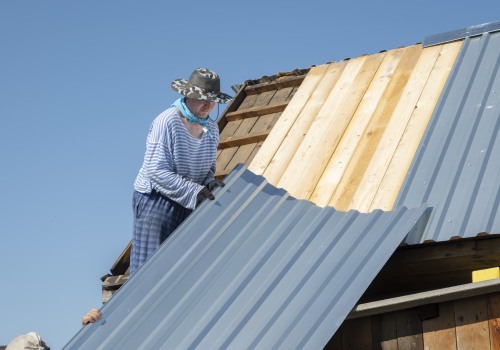Installing a new roof is a big job that can overwhelm homeowners. Before beginning the installation process, there are many things to consider, and it's important to know what to do during and after the installation to ensure that your new roof is installed properly and lasts for years. This article will outline some of the most critical steps you must take before, during, and after your roof installation. Read on for more information.
Why Get Your Roof Replaced
There are several reasons you might need to replace your roof, such as if it's leaking, damaged, or reaching the end of its lifespan.
A leaking roof can cause water damage to your home, which can be expensive to repair. If your roof is damaged, it might need to be replaced to prevent further damage.
Finally, most roofs have a lifespan of 20-30 years, so if your roof is nearing the end of its life, it's a good idea to start considering replacing it.
If you're unsure whether or not you need a new roof, it's a good idea to contact a roofing contractor for an inspection. They will be able to assess the condition of your roof and let you know if it needs to be replaced.
What To Expect During The Roof Installation Or Replacement Process
The installation process will vary depending on the roof type, but you can expect a few general steps. The first step is to remove the old roof, and then the roof deck must be inspected and prepared for the new top. Next, the new roof is installed, and finally, the finishing touches are put in place.
It's essential to remember that weather conditions can affect the length of the installation process, so be patient and allow for extra time if necessary.
How To Ensure Your Roof Is Properly Maintained After Installation
Once your roof is installed, it is essential to maintain it properly to ensure that it lasts many years. Here are a few tips on how to do that:
Inspect your roof regularly.
Be sure to inspect your roof at least once a year or more often if you live in an area with severe weather conditions. Look for any signs of damage, such as missing shingles or leaks, and have them repaired as soon as possible.
Keep your gutters clean.
As mentioned before, gutters are essential in protecting your home from water damage. Be sure to clean them out regularly to prevent clogs and overflow.
Trim trees and shrubs around your home.
Overhanging branches can damage your roof, so always trim them regularly.
Contact your insurance company.
Many insurance companies offer discounts for homeowners who have updated their roofing system, so it's worth checking with your insurer to see if you qualify.
By following these steps before, during, and after your roof installation, you can be sure that your new roof will be installed correctly and last for years.
What Are Rain Gutters To A Roof
Rain gutters, also known as eavestroughs, are essential to any roofing system. They are installed along the roof's edge and collect water that runs off it. The water is then directed away from the house's foundation to prevent leaking and flooding.
Be sure to clean your gutters at least once a year and more often if you live in an area with severe weather conditions. You can clean them yourself or hire a professional to do it for you.
What Are The Types Of Rain Gutters
Several types of rain gutters are available on the market, and the style you choose will depend on your specific needs.
- The most common type of gutter is the sectional gutter, which comprises corresponding individual sections. Sectional gutters are easy to install and available in various materials, such as aluminum, vinyl, and steel.
- Another type of gutter is the seamless gutter, made from a single piece of material and custom-fit to your home. Rain gutters are more expensive than sectional gutters, but they are less likely to leak and are easier to maintain.
- Finally, gutter guards are available that fit over your gutters and help keep them clean. Gutter guards are made from various materials, such as mesh, plastic, and metal, and they can be installed by a professional or do-it-yourself.
No matter what type of rain gutter you choose, be sure to have it installed by a professional to ensure that it is properly secured and functioning correctly.
The Benefits Of Installing A New Roof And Rain Gutters
Having a new roof installed on your home has several benefits. First, it can help to protect your home from water damage by directing rainwater away from the foundation. Second, keeping the inside temperature consistent can improve your home's energy efficiency. And finally, it can increase the value of your home if you ever decide to sell it.
In addition to the benefits of a new roof, installing rain gutters can also help to protect your home from water damage. As mentioned, gutters collect rainwater and direct it away from your home's foundation. This can help to prevent leaks and flooding in your basement or crawl space.
Installing a new roof and rain gutters can be a significant investment, but it will pay off in the long run. Be sure to consult with professional rain gutters near me to discuss your specific needs and get an estimated installation cost.
Contact Rain Gutter Repair And Maintenance In Texas
Contact them today for all your Texas rain gutters repair and maintenance needs. Advanced Seamless Rain Gutter Solutions offers various services to keep your gutters clean and functioning correctly, including gutter guard installation, cleaning, and more. They also provide different financing options to make our services more affordable. Call them today to learn more.




